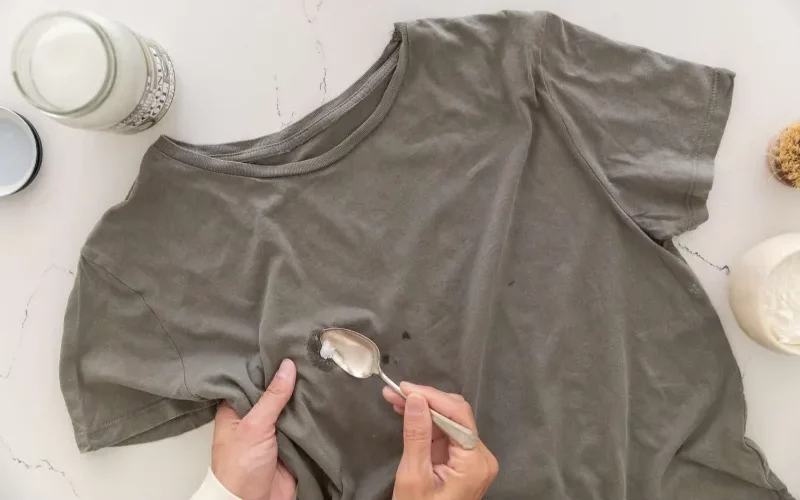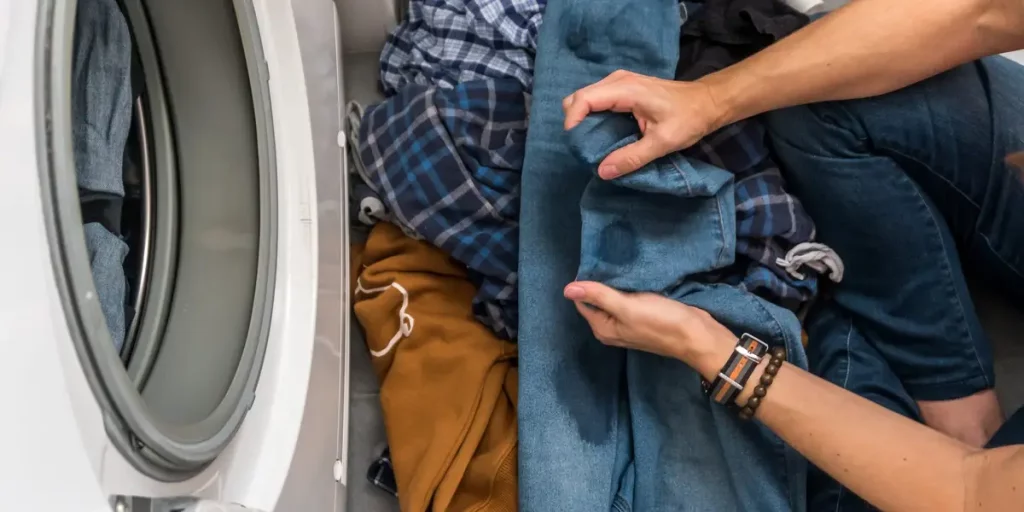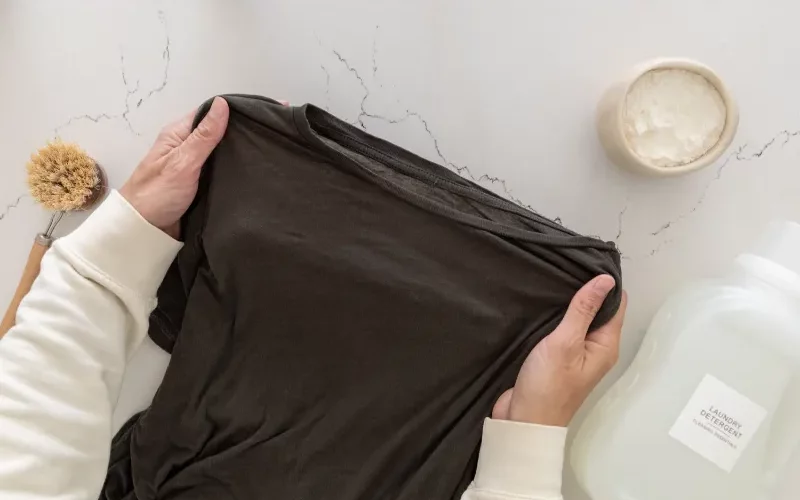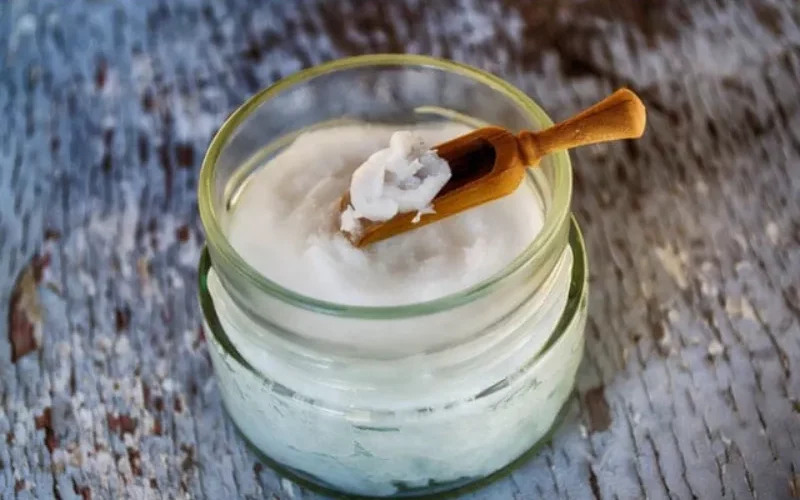Blog
How To Get Coconut Oil Out Of Clothes: Practical Steps to Remove
How to get coconut oil out of clothes? Coconut oil, while being a versatile and natural product used in cooking, skincare, and other applications, can leave stubborn stains on clothing that are not easy to remove. Fret not, however, as there are practical and effective methods to eliminate these unsightly marks. This guide will walk you through a step-by-step process to help you restore your garments to their original state, free of coconut oil stains.
The Origin of Coconut Oil
Originating from the tropical regions, coconut oil is derived from the mature fruits of the coconut tree. The extraction of this oil is an ancient practice that has been carried out for thousands of years in coastal areas, such as the Philippines, India, and other countries in Asia where coconut palm trees grow abundantly. Coconut oil is revered for its multitude of uses, ranging from culinary to cosmetic, due to its unique properties such as a high smoking point and the presence of beneficial fatty acids.
The Usage of Coconut Oil
In our daily lives, coconut oil has become a staple, admired for its versatility and myriad uses. In the culinary world, coconut oil is a preferred cooking medium due to its high smoking point and unique flavor that it imparts to the dishes. Moreover, it is an integral component of various cosmetics and skincare products, owing to its moisturizing properties and the presence of beneficial fatty acids that nourish the skin.
Additionally, it’s used as a natural hair conditioner, promoting healthier and shinier hair. It’s not uncommon to find coconut oil in a range of household items, from toothpaste to deodorants, and even in certain types of laundry detergents, demonstrating the all-encompassing nature of its application.
Coconut Oil Products
Different classifications of coconut oil exist, each with their unique characteristics and uses. Firstly, virgin coconut oil, extracted directly from fresh coconuts, is the purest form, and it’s deemed superior for both dietary and skincare purposes due to its high content of essential nutrients and antioxidants. Secondly, refined coconut oil, drawn from dried coconuts, undergoes various processing stages, including bleaching and deodorizing.
Although its nutritional content is somewhat diminished, it retains a high smoking point, making it ideal for cooking and baking. Lastly, fractionated or liquid coconut oil, stripped of its long-chain fatty acids, remains liquid at cooler temperatures and is often used in beauty products such as moisturizers and hair conditioners due to its light texture.
Why Should Coconut Oil Be Removed From The Clothes?

While the broad spectrum of coconut oil applications bears testimony to its versatility, it becomes rather unwelcome when it leaves unsightly stains on clothing. The seemingly harmless coconut oil can pose a significant challenge when it comes to stain removal, hence necessitating swift action.
The oil, composed primarily of fats, can seep into the fabric fibers, creating a stain which, if not treated promptly, can become permanent. Over time, the stain can attract dirt and grime, making it even more difficult to remove and potentially ruining the garment’s appearance.
Coconut oil stains can also affect fabric integrity if not properly attended to. The oil can gradually break down the fabric’s natural fibers, particularly in delicate materials like silk or fine cotton. This can lead to thinning of the fabric and may cause fraying or premature wear and tear. Furthermore, the oil can create a rancid odor over time as it becomes rancid, making the garment uncomfortable to wear.
Moreover, an untreated coconut oil stain can become a magnet for attracting dust and other particles. The presence of oil stains might lead to a build-up of grime over time, causing discolouration and affecting the fabric’s texture. Therefore, it is not just a matter of aesthetics but also hygiene and garment longevity that necessitates the removal of coconut oil stains from clothes.
Armed with the right knowledge and products, you can eliminate these stubborn stains and preserve your clothing’s life and appearance. By doing so, you can continue to enjoy the benefits of coconut oil in your life, without letting it become a detriment to your wardrobe.
The Risk of Having Coconut Oil In The Clothes For A Long Time
Allowing coconut oil stains to remain on clothing for extended periods of time can have numerous undesirable consequences. Over time, the oil can seep further into the fabric, permanently bonding with the fibers and making removal significantly more difficult. In turn, this can result in stubborn, unsightly stains that mar the garment’s appearance. Additionally, the oil can function as a dust magnet, attracting and trapping microscopic particles that lead to a build-up of grime and potential discolouration of the fabric.
This accumulation of dirt and grime not only detracts from the appearance of the garment but can also cause it to deteriorate faster than it ordinarily would, affecting the texture and wearing down the fabric. Moreover, if coconut oil remains in the fabric for too long, it can develop an unpleasant, rancid odor, making the garment uncomfortable and potentially embarrassing to wear.
The oil, if left untreated, can even compromise the structural integrity of the garment, particularly in more delicate fabrics such as silk or fine cotton, leading to premature wear and tear, fraying, and a reduced lifespan for the clothing item. Thus, it is imperative to address and remove coconut oil stains from clothing as soon as possible to prevent these damaging effects.
Before Beginning to Get Coconut Oil Out Of Clothes
Before embarking on the task of removing coconut oil stains from clothes, it’s imperative to understand a few crucial points. Firstly, the process of extracting oil stains from fabric is different from that of removing regular dirt or dye-based stains. This is because oil is lipophilic, meaning it has an affinity for other oils and fats, and hydrophobic, meaning it repels water. Therefore, it tends to adhere strongly to fabric fibers and can’t be removed by water alone.
Secondly, the type of fabric that has been stained will also influence the treatment method. Delicate fabrics, like silk and fine cotton, require gentle handling and specific cleaning methods to avoid damaging the fabric fibers. In contrast, sturdier materials, such as denim or synthetic fibers, can withstand more vigorous cleaning methods.
It’s also important to note the age of the stain. Fresh stains are generally easier to remove, as the oil hasn’t had a chance to set into the fabric fibers. Older stains, on the other hand, may require multiple treatment rounds and a more intensive cleaning approach. For older, stubborn stains, it’s recommended to seek professional cleaning services, as they have access to specialized cleaning products and techniques.
Before starting the stain removal process, it’s advisable to perform a spot test with the chosen cleaning solution on a small, discreet area of the clothing item. This is to ensure the solution won’t cause color fading or damage the fabric. Always read the garment’s care label for any specific cleaning instructions or warnings. Some fabrics may require dry cleaning or have certain restrictions regarding the use of bleach or other strong cleaning agents.
Lastly, patience and persistence are key when attempting to remove coconut oil stains from clothes. It’s rare that these stains will come out entirely in the first wash, and multiple attempts may be necessary. Applying heat to the stain can cause it to set further, so always air-dry the garment after treating it until you are sure the stain is completely gone.
What We Will Need To Prepare for Getting Coconut Oil Out Of Clothes?
Before we begin the process of removing coconut oil stains from clothes, there are several items we must prepare. These items are common household tools and substances that are easily accessible. The first and most important item on the list is a strong liquid laundry detergent.
[amazon bestseller=”strong liquid detergent” items=”5″ ]The effectiveness of the detergent is crucial in this process as it will be the primary agent in breaking down the oil molecules and lifting them from the fabric fibres. For best results, use a detergent specifically designed to tackle oil- and grease-based stains.
The next item we need is baking soda. This versatile, natural cleaning agent is excellent at absorbing oil and grease. It also helps to deodorize the fabric, which can be particularly useful if the coconut oil stain has started to develop a rancid smell. A toothbrush or a small scrubbing brush will also come in handy. This will be used to work the detergent and baking soda into the fabric, helping to dislodge the oil particles.
[amazon bestseller=”baking soda” items=”5″ ]We’ll also need some absorbent clothes or paper towels. These will be used to blot the stain, helping to lift the oil from the fabric. It’s recommended to use white or light-coloured clothes to avoid any colour transfer onto the stained garment. Another useful tool to have on hand is an iron and some brown paper bags. This ‘heat method’ can assist in drawing out stubborn or older oil stains from the fabric.
[amazon bestseller=”paper towel” items=”5″ ]For delicate fabrics, a dry cleaning solvent may be necessary. These are available in most supermarkets or online, and can be a valuable tool in removing oil stains without damaging the fabric’s integrity. Remember to always follow the instructions and safety precautions on the packaging as these solvents can be potent.
Additionally, a small bowl or basin will be needed to create the cleaning solution and for soaking the stained garment, if necessary. Warm (not hot) water will also be needed. Hot water can cause the oil stain to set further into the fabric, making it harder to remove, so it’s advisable to stick with warm water throughout the cleaning process.
[amazon bestseller=”small bowl” items=”5″ ]Preparing all these items ahead of time will streamline the stain removal process and increase the chances of successfully removing the coconut oil stain from your clothes. Remember, patience is key in this process, and it may take several attempts to fully remove the stain. With the right tools and persistence, you can restore your clothing to its former glory.
The Instruction Steps To Get Coconut Oil Out Of Clothes
Pre-treat the Stain
Start by laying out the stained garment on a flat surface with the stained side up. Apply a generous amount of liquid laundry detergent directly onto the coconut oil stain. Make sure to use a detergent specifically designed to tackle oil and grease-based stains for optimal results. Using a soft-bristled toothbrush or scrubbing brush, gently work the detergent into the fabric. This helps to break down the oil molecules and lift them from the fabric fibres. Leave the detergent to sit on the stain for at least 15 minutes to allow it to penetrate the oil.
Absorb Excess Oil with Baking Soda
Sprinkle a liberal amount of baking soda onto the pre-treated stain. Baking soda is a natural cleaning agent renowned for its oil-absorbing properties. Leave the baking soda on the stain for about 30 minutes to give it time to absorb the oil. After this time, gently brush off the baking soda from the garment.
Wash the Garment
Place the garment in the washing machine and select a wash cycle appropriate for the fabric type, as indicated on the garment’s care label. Add the recommended amount of laundry detergent for the load size. For best results, do not overload the washing machine, as this can hinder the mechanical action needed to help remove the stain.
Air Dry
Once the wash cycle has finished, remove the garment from the washing machine and inspect the stained area. If the stain is still visible, do not dry the garment using heat, as this can cause the oil stain to set further into the fabric. Instead, air dry the garment by laying it flat or hanging it up to dry naturally.
Repeat the Process if Necessary
If the stain is still visible after the first wash, repeat the above steps. Oil stains can be stubborn and may require several treatments to fully remove. Always inspect the stained area before and after each wash cycle. Once the stain is completely gone, you can resume your normal laundry routine for the garment.
Remember, patience and persistence are key when dealing with coconut oil stains. By following these steps, you can effectively remove coconut oil stains from your clothes and keep them looking their best.
Tips and Tricks For Removing Coconut Oil Stains
When dealing with coconut oil stains, prompt action can make a significant difference. The sooner you can treat the stain, the better the outcome. Adding a bit of white vinegar to the wash can help to break down the oil further and enhance the stain removal process. If the stain is old or particularly stubborn, you might consider using a commercial degreaser.
Following the manufacturer’s instructions, apply it to the stained area before washing. For delicate fabrics, testing any stain removal method on an inconspicuous area first is always a smart move to ensure it won’t damage the material. Lastly, resist the urge to use hot water or a hot dryer as heat can cause the oil stain to set into the fabric, making it even more challenging to remove.
How Long Will The Clothes Return To Normal After Applying Instruction To Remove Coconut Oil?
The duration it takes for clothes to return to normal after applying these instructions to remove coconut oil stains can vary significantly. This is influenced by factors such as the severity of the stain, the type of fabric, and the number of treatments necessary. Minor stains on sturdy fabrics may disappear after a single treatment and wash cycle, allowing the garment to return to normal within a few hours, considering drying time.
However, more stubborn stains on delicate fabrics may require multiple treatments, extending the restoration period to several days. It is vital to remain patient and persistent, ensuring each step is thoroughly completed to achieve the best results.
Precautions: How To Get Coconut Oil Out of Clothes Safely?
When attempting to remove coconut oil stains from your clothes, safety should always be your priority. Be sure to handle any cleaning solvents or detergents with care, using them in a well-ventilated area and avoiding direct contact with your skin and eyes. Always follow the instructions on the product packaging to prevent any adverse reactions. When applying these substances, wear rubber gloves to protect your skin.
For clothes made from delicate fabrics, do a spot test with any cleaning product in an inconspicuous area to avoid damaging or discoloring the material. Avoid using hot water or a hot dryer as these can set the stain further into the fabric. Lastly, take your time throughout the process to ensure each step is done correctly and safely, which will not only protect you but will also result in the most effective stain removal.
FAQs About Removing Coconut Oil Stains
Can I use dish soap to remove coconut oil stains from my clothes?
Yes, dish soap can be highly effective in removing oil-based stains, including coconut oil. The detergent properties of dish soap are designed to break down fats and oils, similar to how it cuts through grease on dishes. Apply a small amount of dish soap to the stained area, gently work it into the fabric with a soft-bristled brush, then rinse with cold water. Wash the garment as normal and allow it to air dry. Always check the stained area before drying with heat to ensure the stain is fully removed.
How can I prevent coconut oil stains?
Preventing coconut oil stains mainly involves careful handling of the oil. If you’re using coconut oil for cooking or skincare, consider wearing an apron or old clothes that you don’t mind getting stained. In case of a spill, blot up as much of the oil as you can with kitchen roll immediately to prevent it from soaking into the fabric.
Is it possible to remove old coconut oil stains?
Yes, it’s possible to remove old coconut oil stains, but it may require more effort. Pre-treat the stained area with a grease-fighting detergent, then wash as normal. You might have to repeat this process a few times. Don’t use heat to dry the garment until the stain is fully gone as heat can set the stain further.
Why should I avoid using hot water or a hot dryer for an oil-stained garment?
Hot water and hot dryers can cause the oil stain to set into the fabric, making it more challenging to remove. It’s best to use cold water for washing and rinsing, and allow the garment to air dry.
What should I do if a coconut oil stain remains after washing?
If a coconut oil stain is still visible after washing, don’t dry the garment with heat. Instead, repeat the pre-treatment and washing process. Persistent stains may require multiple treatments, so patience is key. Consider using a commercial degreaser for particularly stubborn stains, following the manufacturer’s instructions.
Conclusion
In conclusion, removing coconut oil stains from clothes requires a degree of patience, persistence, and the right approach. Quick action can significantly enhance the outcome, with dish soap serving as a potent ally in breaking down the oil. However, one should always take care to avoid hot water or dryers until the stain is completely removed to prevent setting it further into the fabric.
For stubborn stains, commercial degreasers can be a useful addition to the regimen. Always remember to prioritise safety by handling cleaning products cautiously and testing them on inconspicuous areas when dealing with delicate fabrics. By adhering to these tips, you can effectively tackle coconut oil stains and keep your clothes looking their best.




